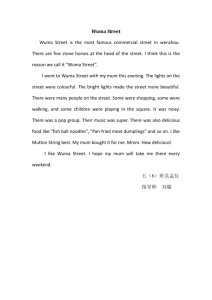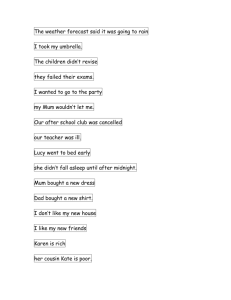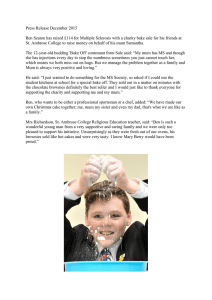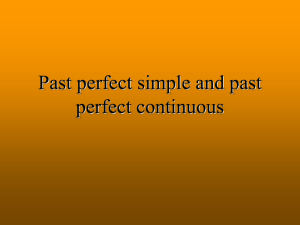Unit R081 - The content of scripts lesson element - Learner activity (DOC, 378KB)
advertisement
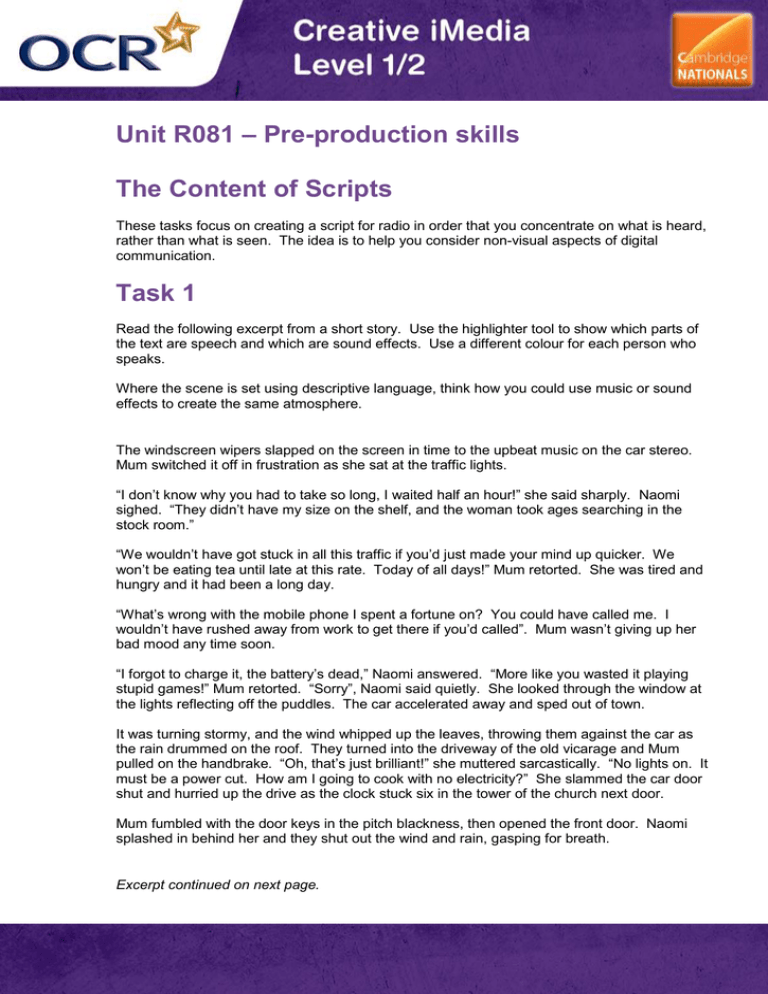
Unit R081 – Pre-production skills The Content of Scripts These tasks focus on creating a script for radio in order that you concentrate on what is heard, rather than what is seen. The idea is to help you consider non-visual aspects of digital communication. Task 1 Read the following excerpt from a short story. Use the highlighter tool to show which parts of the text are speech and which are sound effects. Use a different colour for each person who speaks. Where the scene is set using descriptive language, think how you could use music or sound effects to create the same atmosphere. The windscreen wipers slapped on the screen in time to the upbeat music on the car stereo. Mum switched it off in frustration as she sat at the traffic lights. “I don’t know why you had to take so long, I waited half an hour!” she said sharply. Naomi sighed. “They didn’t have my size on the shelf, and the woman took ages searching in the stock room.” “We wouldn’t have got stuck in all this traffic if you’d just made your mind up quicker. We won’t be eating tea until late at this rate. Today of all days!” Mum retorted. She was tired and hungry and it had been a long day. “What’s wrong with the mobile phone I spent a fortune on? You could have called me. I wouldn’t have rushed away from work to get there if you’d called”. Mum wasn’t giving up her bad mood any time soon. “I forgot to charge it, the battery’s dead,” Naomi answered. “More like you wasted it playing stupid games!” Mum retorted. “Sorry”, Naomi said quietly. She looked through the window at the lights reflecting off the puddles. The car accelerated away and sped out of town. It was turning stormy, and the wind whipped up the leaves, throwing them against the car as the rain drummed on the roof. They turned into the driveway of the old vicarage and Mum pulled on the handbrake. “Oh, that’s just brilliant!” she muttered sarcastically. “No lights on. It must be a power cut. How am I going to cook with no electricity?” She slammed the car door shut and hurried up the drive as the clock stuck six in the tower of the church next door. Mum fumbled with the door keys in the pitch blackness, then opened the front door. Naomi splashed in behind her and they shut out the wind and rain, gasping for breath. Excerpt continued on next page. “Maybe we can have a sandwich?” Naomi suggested. “I’ll make it if you like.” “Ssh!” Mum said sharply. “Did you hear that?” “What?” answered Naomi. “Stop it, you’re freaking me out. You know I’ve always thought this house is haunted.” “I’m sure I heard something in the living room,” Mum whispered. “Pass me that brolly, I’m going to have a look”. Slowly, Mum tiptoed to the door. She turned the handle, and with a squeak, opened the door. “Surprise!” came the shout. The lights snapped on and revealed Dad, Naomi’s brother Paul and a group of friends, squashed in to the room. Party poppers were set off, and a huge laugh came from the room at Mum’s shocked response. “Happy Birthday, Mum!” Naomi said cheerfully. “Sorry about the trick, but I had to keep you out of the house ‘til everyone got here!” Task 2 Now turn the narrative into a script for a radio play. Remember there are no visual hints to rely on – your whole scene and atmosphere must be created using sounds and silence alone. Your script should include the following: Location for the scene suggested by Sound Effects Mood of the scene suggested by introductory music Direction (eg what happens in the scene, interactions) Sounds (eg for actions or events) Dialogue between characters (eg intonation, loudness, emotion) Your formatting and layout should follow scripting conventions. In broad terms, this means showing who is speaking, how that person speaks where any pauses occur and using specific formatting to denote sound effects clearly. Speech marks are not used for dialogue. You can search for examples of scripts for radio and TV on the BBC Writersroom website: http://www.bbc.co.uk/writersroom/scripts/search Conventions in layout differ, but it is important that the elements of the scripts can be read clearly and easily. In the example below, SFX are shown in italics, style of delivery is shown in brackets and characters’ names are in upper case on the left margin: Musical introduction: the theme from James Bond, 5 seconds, fades out. Footsteps on gravel, a key in the lock, front door creaks open. JAMES: (calls loudly and cheerfully) I’m home! What’s for dinner?
